How to Encourage Curiosity in Kids: A Complete Guide to Nurturing Young Minds Through Stories and Exploration
How to Encourage Curiosity in Kids: A Complete Guide to Nurturing Young Minds Through Stories and Exploration
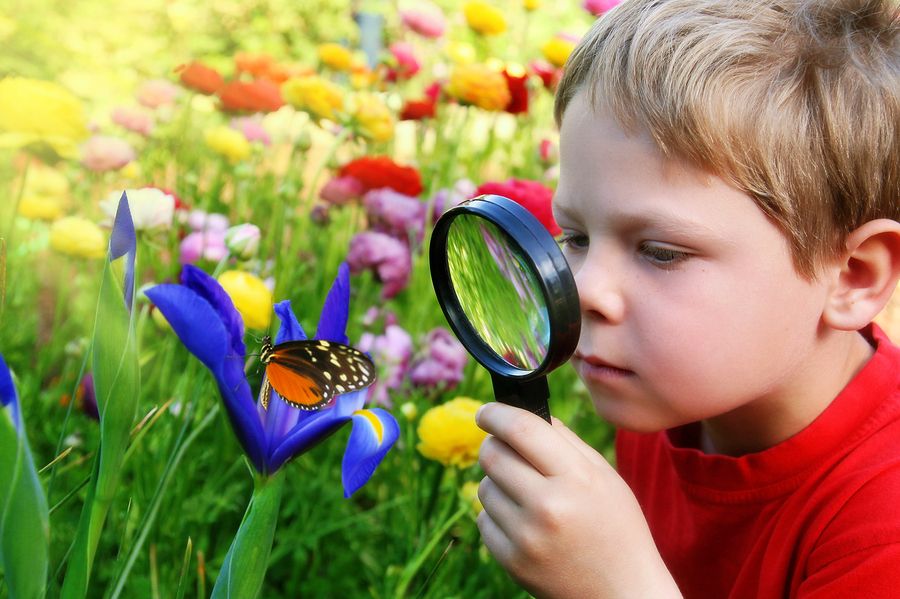
🌟 Why This Guide Matters
Curiosity is the engine of achievement and the foundation of lifelong learning. In our digital age, nurturing natural curiosity in children through engaging children stories, bedtime stories, fairy tales, and hands-on exploration has never been more crucial. This comprehensive guide provides proven strategies to spark and sustain curiosity in young minds through the power of storytelling and discovery.
Every child is born with an insatiable curiosity about the world around them. From the moment they open their eyes, children are natural explorers, constantly asking "why?" and "how?" However, as they grow older, this innate sense of wonder can diminish if not properly nurtured and encouraged. The key to maintaining and enhancing curiosity lies in creating environments rich with engaging experiences, meaningful stories, and opportunities for discovery.
Research consistently shows that curious children become more successful adults, better problem-solvers, and more adaptable individuals. They develop stronger critical thinking skills, demonstrate greater creativity, and show increased resilience when facing challenges. By incorporating elements like bedtime stories, fairy tales, educational stories, and interactive learning experiences, parents and educators can create a foundation that supports lifelong learning and intellectual growth.
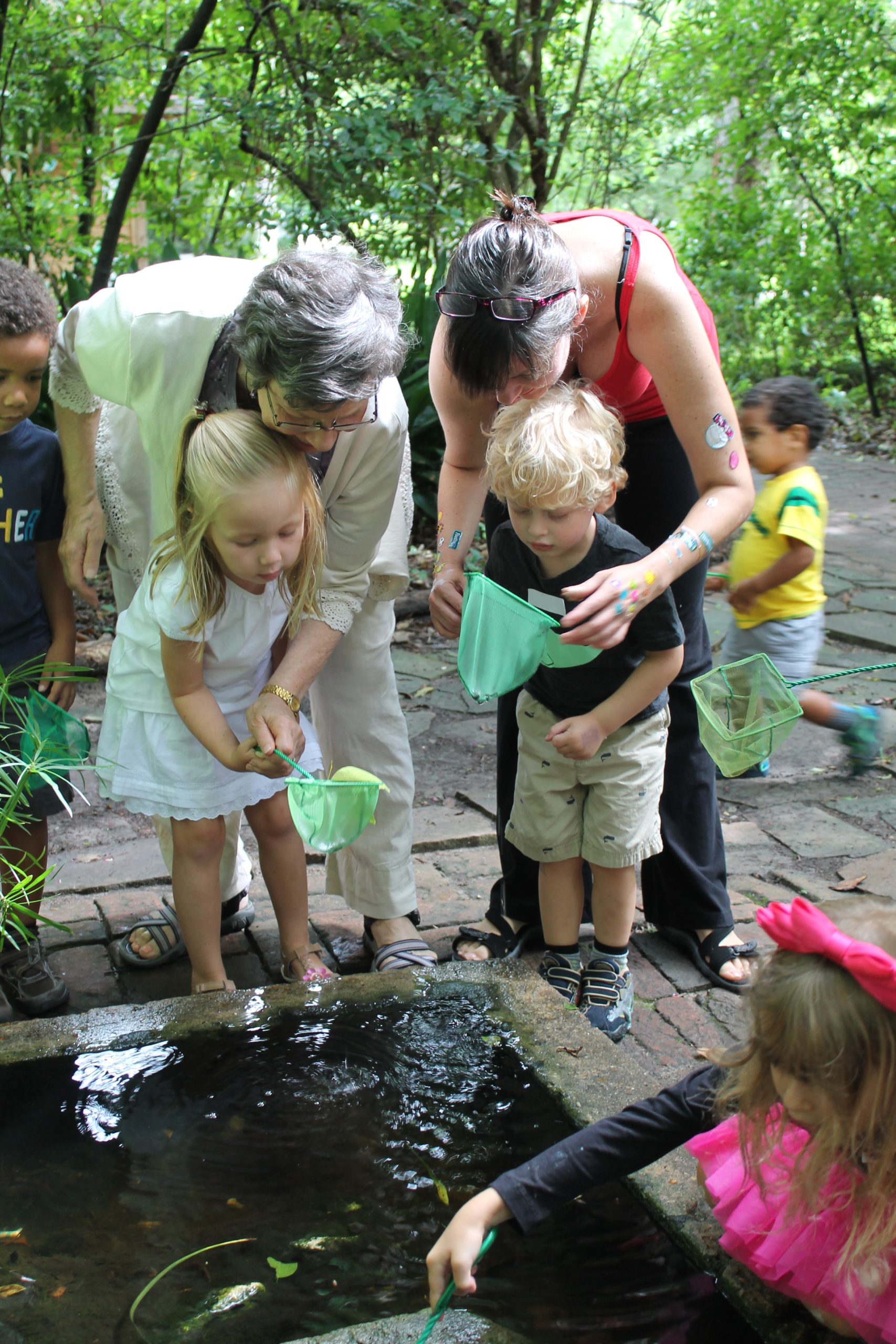
The journey of fostering curiosity begins with understanding that children learn best when they're engaged, excited, and emotionally connected to the material. This is where the magic of storytelling comes into play. Through children stories, adventure stories, moral stories, and imaginative stories, we can transport young minds to new worlds, introduce complex concepts in accessible ways, and inspire questions that lead to deeper understanding.
Understanding the Nature of Childhood Curiosity
Curiosity in children manifests in various forms, from the toddler who repeatedly asks "what's that?" to the school-age child who wants to take apart every gadget to see how it works. This natural inclination to explore, question, and understand is fundamental to human development and serves as the primary driver of learning throughout life.
The Science Behind Curious Minds
Neuroscientific research reveals that when children experience curiosity, their brains release dopamine, a neurotransmitter associated with pleasure and reward. This biological response creates positive associations with learning and discovery, making children more likely to seek out new experiences and information. The areas of the brain responsible for memory and attention become more active when children are in a curious state, leading to better retention and understanding of new concepts.
This neurological process explains why children stories and bedtime stories are so effective in educational contexts. When children are emotionally engaged with characters and narratives, they're more receptive to learning embedded within those stories. Whether it's a classic tale teaching moral lessons or an adventure story exploring scientific concepts, the emotional connection enhances cognitive processing and memory formation.
Key Insight
Children's curiosity peaks between ages 4 and 5, making this a critical window for introducing diverse storytelling experiences, including picture books, fairy tales, and interactive stories that can shape their lifelong relationship with learning.
Different Types of Curiosity in Children
Understanding the various forms curiosity takes helps parents and educators tailor their approaches to individual children's interests and learning styles. Perceptual curiosity drives children to explore their immediate environment through their senses, while epistemic curiosity motivates them to seek deeper understanding and knowledge about the world beyond their direct experience.
Diversive curiosity appears when children seek stimulation to escape boredom, often leading to creative play and imaginative storytelling. Specific curiosity emerges when children focus intensely on particular topics or problems, driving them to become temporary experts on subjects ranging from dinosaurs to space exploration. Each type of curiosity can be nurtured through different approaches involving educational stories, fables, and hands-on activities.
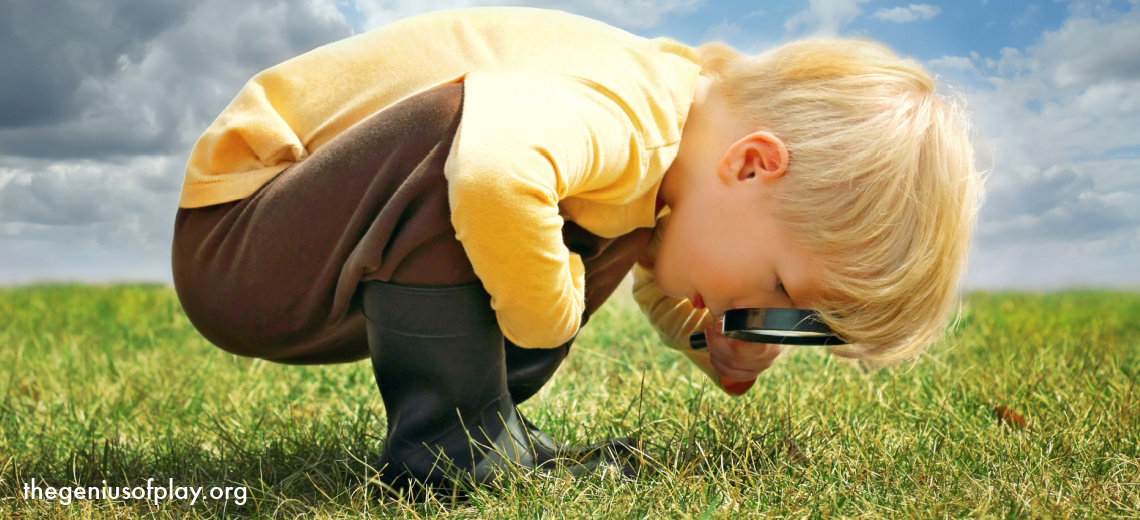
The developmental trajectory of curiosity also varies among children. Some may show intense interest in narrative-based learning through magical stories and fantasy stories, while others gravitate toward hands-on experimentation and discovery. Recognizing these preferences allows caregivers to provide appropriate materials and experiences that resonate with each child's natural inclinations.
The Transformative Power of Storytelling in Nurturing Curiosity
Stories have been humanity's primary method of sharing knowledge, values, and understanding for millennia. In the context of child development, storytelling serves as a powerful vehicle for sparking curiosity while simultaneously addressing emotional, social, and cognitive growth. Through carefully crafted narratives, children can explore complex concepts, experience different perspectives, and develop the questioning skills that fuel lifelong learning.
How Stories Ignite the Curious Mind
When children engage with stories, they naturally begin to wonder about characters' motivations, predict plot developments, and imagine alternative scenarios. This mental activity strengthens critical thinking skills while maintaining the joy and wonder essential to sustained curiosity. Whether through classic tales passed down through generations or contemporary picture books addressing modern themes, stories provide safe spaces for children to explore challenging topics and complex emotions.
The interactive nature of storytelling, particularly during storytime sessions, allows children to participate actively in the narrative process. They can ask questions, make predictions, and even contribute to story development, transforming passive consumption into active engagement. This participation not only enhances comprehension but also builds confidence in their ability to think critically and express ideas clearly.

Choosing Stories That Spark Wonder
Not all stories are equally effective at fostering curiosity. The most impactful narratives for young minds combine familiar elements with novel concepts, creating a balance between comfort and challenge. Animal stories, for example, allow children to relate to characters while learning about different habitats, behaviors, and ecological relationships. Fantasy stories transport children to imaginative worlds where anything is possible, encouraging creative thinking and problem-solving.
Short stories for kids offer concentrated doses of wonder and learning, perfect for maintaining attention while delivering meaningful messages. These brief narratives can introduce scientific concepts, historical events, or cultural traditions in engaging, age-appropriate formats. The key is selecting stories that leave children with questions rather than simply providing all the answers, encouraging them to seek additional information and make connections to their own experiences.
Creating Interactive Storytelling Experiences
Interactive stories take engagement to the next level by allowing children to influence narrative outcomes through their choices and participation. These experiences can range from simple "choose your own adventure" formats to elaborate multimedia presentations involving music, visual effects, and hands-on activities. The goal is to make children active participants in the storytelling process rather than passive recipients of information.
Technology offers exciting possibilities for interactive storytelling, with illustrated books coming to life through augmented reality applications and digital platforms offering personalized narrative experiences. However, the most effective interactive stories often rely on simple techniques like encouraging children to make sound effects, act out character movements, or predict what happens next. These low-tech approaches maintain focus on the story itself while building engagement and curiosity.
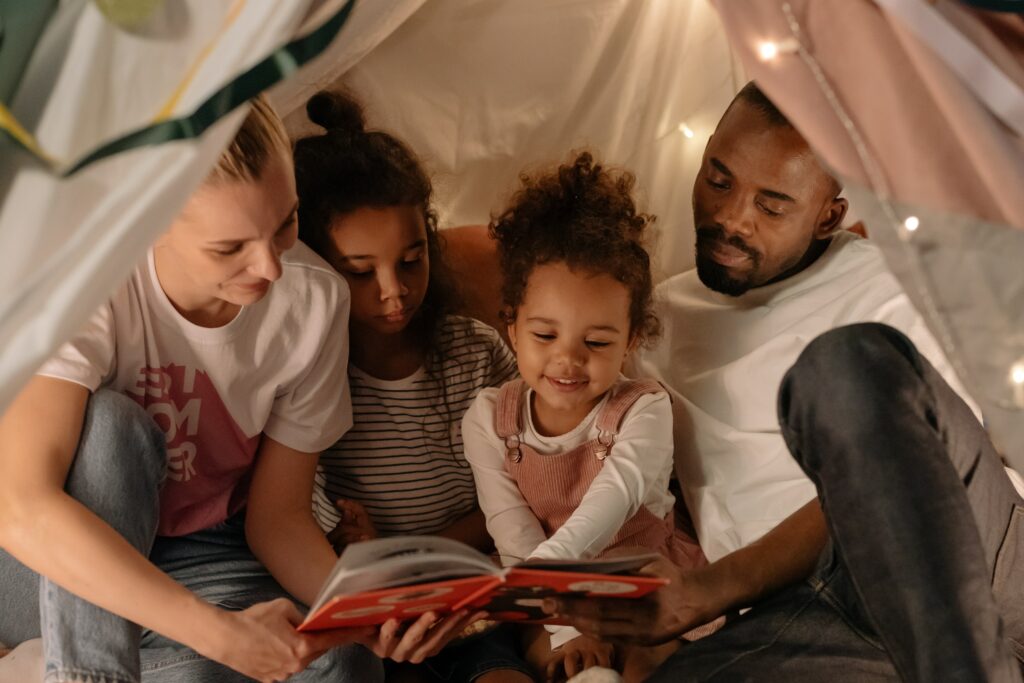
The timing and setting of interactive storytelling also influence its effectiveness. Bedtime stories serve different purposes than educational stories shared during daytime learning sessions. Evening narratives often focus on calming themes and emotional connection, while daytime stories can incorporate more active elements and challenging concepts. Understanding these distinctions helps caregivers select appropriate materials and approaches for different contexts and objectives.
Nature as the Ultimate Curiosity Catalyst
The natural world provides an endless source of wonder and discovery for curious children. From the intricate patterns of leaves to the complex behaviors of insects, nature offers countless opportunities for observation, experimentation, and learning. When combined with nature-themed adventure stories and outdoor exploration narratives, these experiences become even more meaningful and memorable for young learners.
The Outdoor Classroom Experience
Outdoor environments naturally stimulate all five senses, creating rich learning experiences that engage children on multiple levels. Unlike indoor settings where stimuli are often controlled and predictable, nature presents constantly changing conditions that require adaptation, observation, and problem-solving. These dynamic environments encourage children to ask questions, make hypotheses, and test their understanding through direct experience.
The unpredictability of outdoor exploration mirrors the excitement found in adventure stories and mystery tales. Just as children eagerly turn pages to discover what happens next in their favorite books, they approach nature with similar anticipation and wonder. This parallel between literary and natural discovery reinforces the connection between curiosity and learning across different domains.

Seasonal Discovery Adventures
Each season offers unique opportunities for natural exploration and curiosity building. Spring brings new growth, emerging insects, and changing weather patterns that invite investigation and wonder. Summer provides longer days for extended outdoor exploration, water-based experiments, and observations of peak biological activity. Autumn introduces concepts of change, preparation, and cycles through colorful foliage and animal behaviors, while winter reveals hidden structures and different survival strategies.
These seasonal changes can be enhanced through related storytelling experiences. Reading fairy tales about seasonal transformations, heartwarming tales of animal preparation for winter, or magical stories about spring awakening helps children make connections between their direct observations and broader natural patterns. This integration of literature and experience deepens understanding and maintains engagement throughout the year.
Hands-On Nature Activities
Simple activities like creating nature journals, collecting and categorizing specimens, or building fairy houses engage children's natural curiosity while developing scientific observation skills. These activities encourage careful attention to detail, pattern recognition, and systematic thinking – all essential components of scientific inquiry and critical reasoning.
Photography and sketching add artistic elements to nature exploration, allowing children to capture and share their discoveries with others. These documentation activities also encourage closer observation and can lead to deeper questions about the subjects being recorded. When children create their own illustrated books based on their outdoor adventures, they combine storytelling skills with scientific observation, reinforcing learning across multiple domains.
Nature Exploration Tips
- Start with familiar environments and gradually expand to new locations
- Encourage questions rather than providing immediate answers
- Bring magnifying glasses and collection containers for closer examination
- Follow children's interests rather than sticking to predetermined agendas
- Connect outdoor discoveries to related books and stories
Simple Science Experiments That Spark Wonder
Science experiments designed for young children provide controlled opportunities to explore cause and effect relationships while developing hypothesis formation and testing skills. When presented as adventures or mysteries to solve, these activities become even more engaging and memorable. The key is selecting experiments that are safe, age-appropriate, and directly connected to children's everyday experiences and observations.
Kitchen Chemistry Adventures
Many of the most effective science experiments for children use common household materials, making them accessible and repeatable. Kitchen chemistry experiments like creating volcanic eruptions with baking soda and vinegar, growing crystals with salt solutions, or exploring density with oil and water provide immediate visual feedback that captures children's attention and generates questions about underlying processes.
These hands-on experiences can be enhanced through related storytelling that explains the science behind the phenomena in age-appropriate ways. Educational stories about molecular behavior, fables featuring chemical reactions, or adventure stories involving scientific discovery help children understand the principles behind their observations while maintaining the wonder and excitement of exploration.
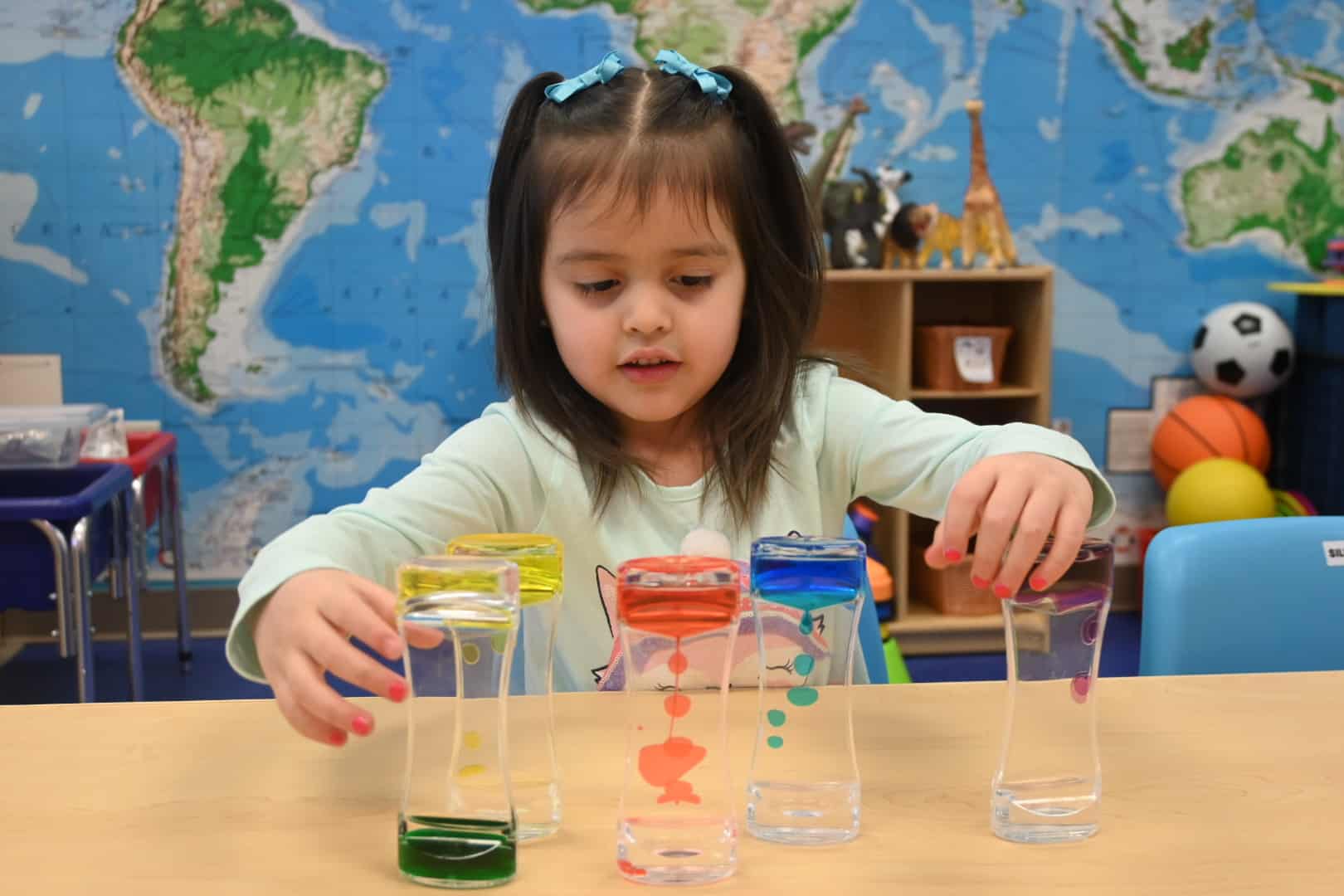
Physics Phenomena for Young Minds
Simple physics experiments involving magnetism, light, sound, and motion provide concrete experiences with abstract concepts that children encounter daily. Building simple machines from everyday materials, experimenting with light and shadows, or exploring sound production and transmission through various media help children develop understanding of the physical world while encouraging continued questioning and investigation.
The beauty of physics experiments for children lies in their immediate and often surprising results. When children witness unexpected outcomes, their natural curiosity drives them to repeat experiments, modify variables, and seek explanations. This process mirrors the scientific method while maintaining the joy and wonder essential to sustained engagement with learning.
Biology Investigations
Living systems provide endless opportunities for observation and experimentation. Growing plants from seeds, observing insect behavior, or investigating how different conditions affect living organisms helps children understand biological processes while developing skills in systematic observation and data collection.
These biological investigations can be enhanced through animal stories and nature-based narratives that provide context and deeper understanding. When children read about plant life cycles in picture books and then observe those same processes in their own gardens, the connection between literary and experiential learning reinforces understanding and maintains curiosity about natural processes.

Creating a Curiosity-Rich Environment at Home
The physical and emotional environment in which children spend their time significantly impacts their willingness to explore, question, and learn. Creating spaces that encourage curiosity involves more than just providing educational materials; it requires thoughtful design of both physical spaces and daily routines that prioritize discovery and wonder over rigid structure and predetermined outcomes.
Designing Discovery Spaces
A curiosity-rich environment provides easy access to materials that encourage exploration and experimentation. This might include a well-stocked library of children stories, picture books, and illustrated books arranged at child height for independent browsing. Art supplies, building materials, magnifying glasses, and collection containers should be readily available and organized in ways that invite use rather than requiring adult assistance.
The key to effective discovery spaces is flexibility and accessibility. Children should feel free to combine materials in unexpected ways, pursue their interests without excessive restriction, and clean up independently when activities conclude. This autonomy supports self-directed learning while building confidence in their ability to manage their own educational experiences.

Establishing Curiosity-Supporting Routines
Daily routines can either support or inhibit natural curiosity depending on their structure and flexibility. Curiosity-supporting routines include regular storytime sessions featuring different genres of children stories, scheduled periods for free exploration and experimentation, and consistent opportunities for children to share their discoveries and questions with attentive adults.
The balance between structure and freedom is crucial for maintaining curiosity while providing the security children need to take intellectual risks. Predictable routines for basic needs like meals and sleep create stability, while flexible time blocks allow children to pursue interests as they develop. This combination supports both security and exploration, essential elements for sustained curiosity and learning.
Technology Integration
When used thoughtfully, technology can enhance rather than replace traditional curiosity-building activities. Digital tools can provide access to interactive stories, virtual museum tours, and documentary content that extends children's understanding beyond their immediate environment. However, the most effective technology integration maintains focus on active engagement rather than passive consumption.
The key is using technology to support and extend real-world exploration rather than replacing it. Virtual reality experiences of distant places can inspire questions that lead to research and discussion, while documentary films about animals can enhance understanding of creatures encountered during outdoor exploration. The goal is creating seamless connections between digital and physical experiences that reinforce learning and maintain curiosity across different domains.
Home Environment Checklist
- Accessible library with diverse children stories and picture books
- Art and craft supplies within easy reach
- Science exploration tools (magnifying glass, measuring tools, collection containers)
- Flexible spaces that can be reconfigured for different activities
- Display areas for sharing discoveries and creations
- Regular quiet time for reading and independent exploration
The Art of Questioning: Guiding Without Giving Answers
One of the most powerful tools parents and educators have for nurturing curiosity is the strategic use of questions. Rather than immediately providing answers to children's inquiries, skilled adults guide young learners toward discovery through carefully crafted questions that encourage deeper thinking and sustained investigation. This approach builds confidence in children's ability to find solutions while maintaining their natural sense of wonder.
Types of Questions That Inspire
Open-ended questions that cannot be answered with simple "yes" or "no" responses encourage children to think more deeply about their observations and experiences. Questions like "What do you notice about..." or "What might happen if..." invite exploration and hypothesis formation rather than rote recitation of facts. These inquiries work equally well when discussing characters and plot developments in fairy tales or examining natural phenomena during outdoor exploration.
Wonder-based questions that begin with "I wonder why..." or "I wonder what would happen if..." model curiosity for children while inviting them to join in the investigation process. This approach demonstrates that adults, too, are learners who don't have all the answers, making the exploration process collaborative rather than hierarchical.
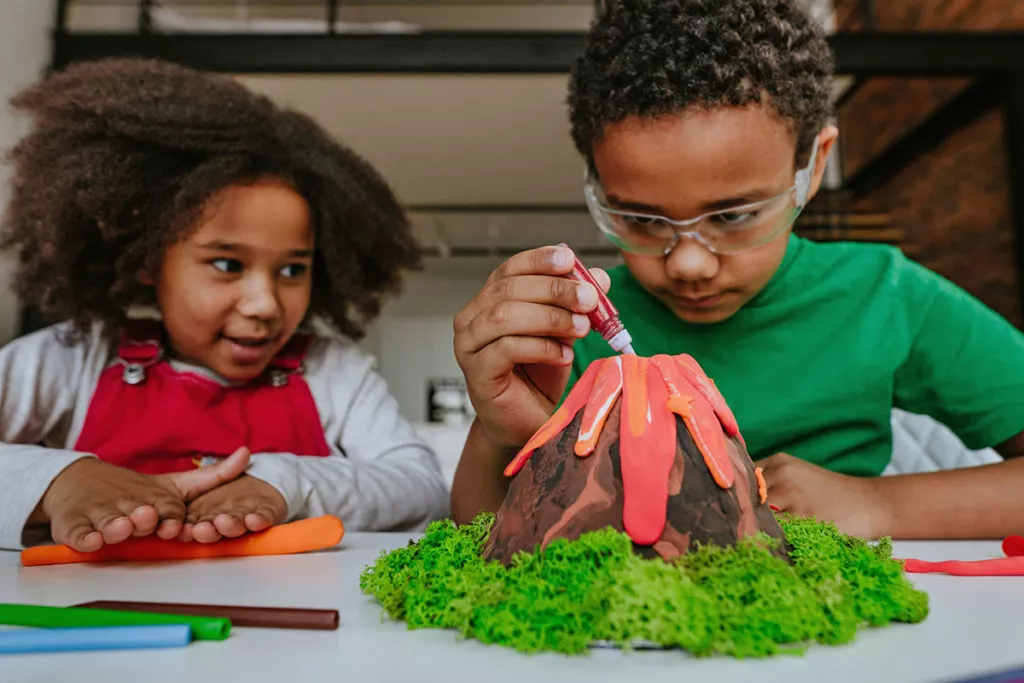
Timing and Context for Effective Questioning
The effectiveness of questioning strategies depends heavily on timing and context. During storytime, questions that encourage prediction ("What do you think will happen next?") or character analysis ("Why do you think the character made that choice?") enhance engagement while building critical thinking skills. These narrative-focused questions can later be applied to real-world situations, helping children transfer analytical skills across different domains.
During hands-on exploration activities, observational questions ("What do you notice about the way this behaves?") followed by analytical questions ("Why might that be happening?") guide children through the scientific process of observation and hypothesis formation. The key is asking questions that match children's developmental levels while gently pushing them toward deeper understanding.
Supporting Children's Own Questions
Perhaps more important than asking good questions is responding effectively to children's inquiries. Rather than immediately providing answers, adults can extend learning by asking follow-up questions like "What do you think?" or "How could we find out?" This approach validates children's curiosity while building their confidence as independent learners and problem-solvers.
When children's questions extend beyond adult knowledge, acknowledging uncertainty while modeling research skills demonstrates that learning is a lifelong process. Exploring answers together through books, online resources, or experimentation shows children that curiosity leads to discovery and that seeking information is a valuable skill rather than a sign of ignorance.
Advanced Storytelling Techniques for Maximum Engagement
Effective storytelling goes beyond simply reading words from a page. Master storytellers use voice modulation, dramatic pauses, physical gestures, and interactive elements to create immersive experiences that capture children's imagination and maintain their attention throughout the narrative. These techniques can transform even simple toddler stories into memorable adventures that inspire questions and deeper thinking.
Voice and Character Development
Creating distinct voices for different characters helps children distinguish between speakers while adding personality and emotion to the narrative. These vocal variations don't need to be elaborate; subtle changes in pitch, pace, or accent can bring characters to life while maintaining the storyteller's comfort level. Consistency in character voices throughout a story or series helps children develop stronger connections to characters and better follow plot developments.
Beyond voice changes, incorporating character emotions through vocal expression helps children understand and empathize with story characters. When reading moral stories or heartwarming tales, emotional expression through voice conveys the underlying messages more effectively than words alone, helping children internalize important values and life lessons.
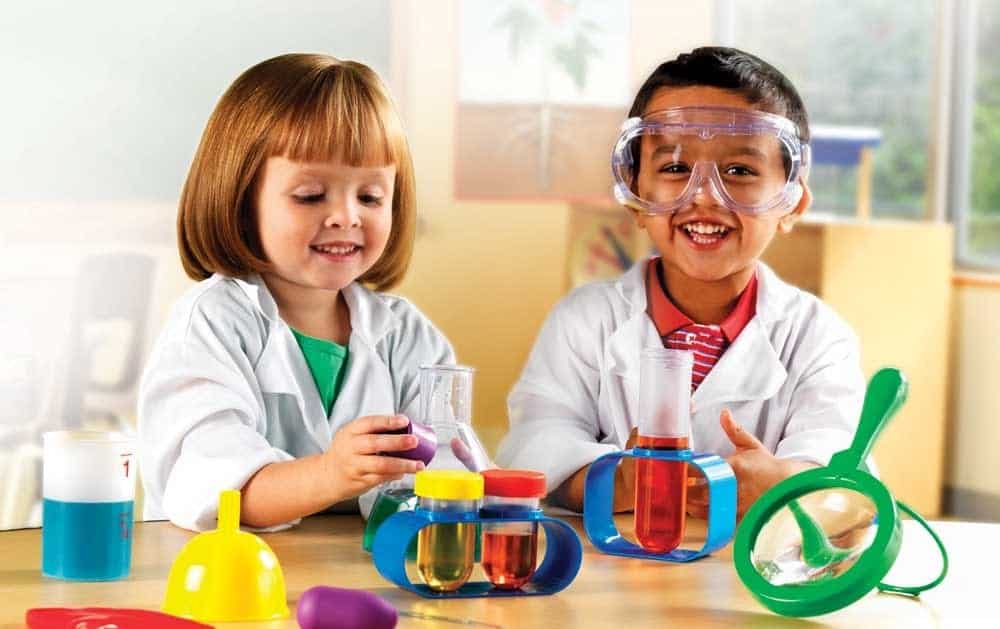
Physical Engagement and Movement
Incorporating physical movement and gestures into storytelling helps kinesthetic learners engage more fully with narratives while adding visual elements that enhance comprehension for all children. Simple hand movements, facial expressions, and body positioning can illustrate story concepts while maintaining energy and attention throughout longer narratives.
For preschool stories and early reader books, physical engagement might include acting out character movements, creating sound effects through clapping or stamping, or using simple props to represent story elements. These activities transform passive listening into active participation, increasing retention and enjoyment while building positive associations with literature and learning.
Environmental Storytelling
The physical setting for storytelling significantly impacts the experience for young listeners. Creating cozy reading nooks with soft lighting and comfortable seating helps establish bedtime stories as special, intimate experiences. For more active adventure stories or educational narratives, different settings might be more appropriate, such as outdoor spaces that connect to nature-themed tales or hands-on activity areas for science-related stories.
Props and visual aids can enhance storytelling without overwhelming the narrative itself. Simple puppets, picture cards, or costume pieces help children visualize story elements while maintaining focus on the plot and characters. The key is using enhancements that support rather than distract from the storytelling experience, keeping the story itself as the primary focus.
Storytelling Enhancement Techniques
- Use dramatic pauses to build suspense and anticipation
- Vary reading pace to match story action and emotion
- Make eye contact with listeners during key moments
- Encourage audience participation through repetitive phrases or sounds
- Use simple props or visual aids to enhance key story elements
- Create comfortable, distraction-free environments for storytelling
Building Strong Questioning Skills in Children
Teaching children how to ask good questions is as important as providing them with answers. Strong questioning skills enable children to become independent learners who can navigate new situations, solve problems, and continue learning throughout their lives. These skills develop through practice, modeling, and encouragement from adults who value curiosity and inquiry as much as knowledge acquisition.
Modeling Effective Questioning
Children learn questioning strategies by observing adults who demonstrate curiosity in their daily lives. When adults wonder aloud about natural phenomena, story outcomes, or how things work, they provide models for the types of thinking that lead to deeper understanding. This modeling works particularly well during shared reading experiences where adults can demonstrate how to question character motivations, predict plot developments, or connect story themes to real-world experiences.
The key to effective modeling is authenticity; children readily detect when adult questions are contrived rather than genuinely curious. Real wonder about story outcomes, natural processes, or how things work creates genuine teaching moments that inspire children to develop their own questioning skills. These authentic moments of shared curiosity build stronger connections between adults and children while reinforcing the value of lifelong learning.
:max_bytes(150000):strip_icc()/102854815-9daeb5f680894bcd9a8f71fa8d1a2b67.jpg)
Encouraging Different Types of Questions
Not all questions serve the same purpose, and children benefit from learning to formulate different types of inquiries depending on their goals and contexts. Factual questions help children gather basic information about topics they encounter in educational stories or during exploration activities. Analytical questions encourage deeper thinking about relationships, causes, and effects, while creative questions inspire imagination and hypothesis formation.
Encouraging children to ask "what if" questions during imaginative stories or fantasy stories helps develop creative thinking and problem-solving skills. These hypothetical inquiries allow children to explore possibilities beyond their immediate experience while building confidence in their ability to generate novel ideas and solutions. This type of questioning is particularly valuable during discussions of fables and classic tales that present moral dilemmas or challenging situations.
Research and Investigation Skills
Teaching children how to find answers to their questions is as important as encouraging them to ask those questions in the first place. Age-appropriate research skills might begin with looking through picture books and illustrated books for information, progressing to using simple reference materials and eventually developing digital literacy skills for online investigation.
The process of investigation should emphasize critical thinking about source reliability and accuracy. Even young children can learn to compare information from multiple sources and consider whether answers make sense based on their existing knowledge and experience. These skills become increasingly important as children encounter conflicting information and must evaluate credibility independently.
Using Technology to Enhance Rather Than Replace Curiosity
In our increasingly digital world, technology offers unprecedented opportunities to enhance children's natural curiosity through virtual exploration, interactive learning experiences, and access to global information resources. However, the key to effective technology integration lies in using digital tools to amplify rather than replace hands-on exploration, face-to-face interaction, and imaginative play. The goal is creating seamless connections between digital and physical experiences that deepen rather than distract from meaningful learning.
Interactive Digital Storytelling
Digital platforms offer exciting possibilities for interactive stories that respond to children's choices and preferences. These experiences can adapt to individual learning styles and interests, providing personalized pathways through narratives that encourage active participation and decision-making. When well-designed, digital storytelling tools can enhance rather than replace traditional picture books and bedtime stories, offering complementary experiences that reinforce learning through multiple modalities.
The most effective digital storytelling experiences maintain focus on narrative quality and character development rather than relying solely on technological novelty. Children still need compelling characters, engaging plots, and meaningful themes, whether these elements are delivered through traditional illustrated books or cutting-edge augmented reality applications. Technology should enhance these fundamental story elements rather than replacing them with superficial interactivity.
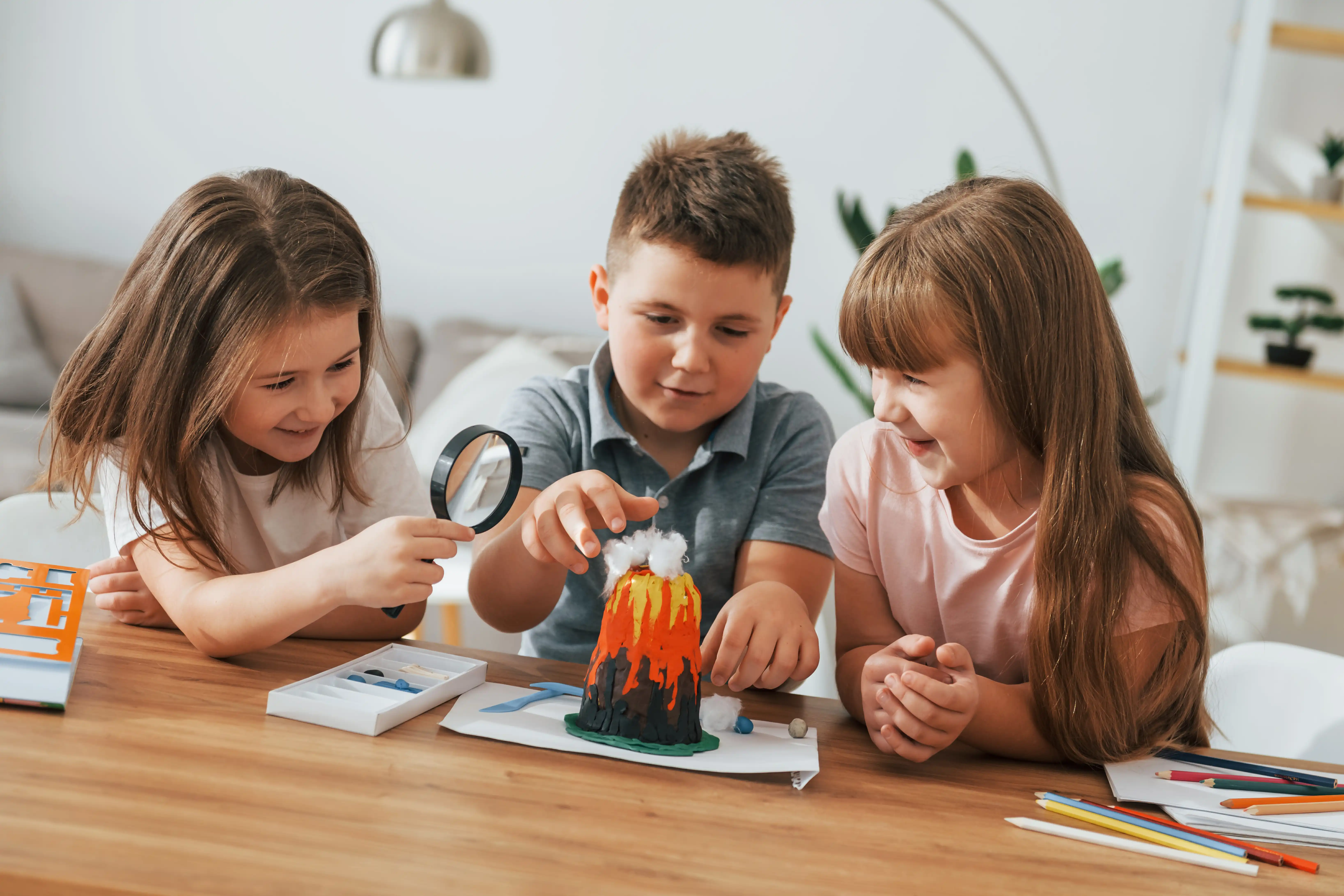
Virtual Exploration and Discovery
Digital tools can transport children to places and times beyond their immediate experience, from ancient civilizations to distant planets, from microscopic worlds to vast ecosystems. Virtual museum tours, documentary content, and educational games can inspire curiosity about topics that might otherwise remain abstract or inaccessible. These experiences work particularly well when connected to hands-on activities that allow children to apply what they've learned through digital exploration.
The key to effective virtual exploration is maintaining connections to children's direct experience and local environment. Virtual trips to rainforests can inspire investigation of local ecosystems, while digital tours of historical sites can motivate research into local history and culture. This approach uses technology as a launching point for real-world exploration rather than a replacement for direct experience.
Digital Creation and Sharing
Technology tools that allow children to create their own content – whether digital stories, artwork, or documentation of their discoveries – can enhance learning while building technical skills. When children use digital tools to create their own imaginative stories or document their science experiments, they engage in active learning that combines creativity, technical skill, and subject matter understanding.
Sharing capabilities built into many digital platforms allow children to receive feedback on their creations while contributing to broader learning communities. However, these sharing opportunities require careful adult supervision and guidance to ensure appropriate interactions and protect children's privacy and safety online.
Effective Technology Integration
- Choose quality over quantity when selecting digital tools and content
- Maintain balance between screen time and hands-on activities
- Use technology to enhance real-world exploration and discovery
- Encourage creation and active engagement over passive consumption
- Ensure adult supervision and guidance for online interactions
- Connect digital experiences to offline learning and discussion
Social Aspects of Curiosity: Learning Together
Curiosity thrives in social environments where children can share discoveries, collaborate on investigations, and learn from each other's perspectives and experiences. Group storytelling sessions, collaborative experiments, and peer discussions about books and discoveries create communities of learners who support and inspire each other's continued exploration and growth. These social dimensions of learning are essential for developing communication skills while maintaining the joy and excitement that drive sustained curiosity.
Peer Learning and Discovery
When children explore together, they naturally share observations, ask questions, and build on each other's ideas in ways that extend learning beyond what any individual might achieve alone. Collaborative reading of adventure stories or group investigation of natural phenomena creates opportunities for peer teaching and learning that benefit all participants while building social skills and empathy.
The diversity of perspectives and interests within peer groups enriches the learning experience for everyone involved. One child's fascination with animal stories might inspire another's interest in biology, while a third child's love of magical stories might lead the group to explore mythology and cultural traditions. These cross-pollination effects multiply the impact of individual interests while building appreciation for different ways of understanding the world.

Family Learning Adventures
Families that explore and learn together create powerful foundations for lifelong curiosity. Shared reading experiences, family science experiments, and collaborative nature exploration build strong emotional associations with learning while providing multiple perspectives on new discoveries. These family activities work particularly well when they incorporate everyone's interests and allow different family members to contribute their unique knowledge and skills.
Multi-generational learning experiences are particularly valuable for children's development. Grandparents sharing classic tales and family stories provide connections to history and tradition, while parents contribute contemporary knowledge and different perspectives. Siblings offer peer-level interaction and collaborative problem-solving opportunities that complement adult guidance and support.
Community Connections
Extending learning beyond the immediate family through community connections exposes children to diverse perspectives and expertise while building social skills and cultural awareness. Library storytelling sessions, museum programs, nature center activities, and community science events provide structured opportunities for children to engage with knowledgeable adults and peers who share their interests.
These community connections also help children understand that learning and curiosity are valued by society more broadly. When children see adults dedicating time and resources to educational programming, they internalize messages about the importance and value of continued learning and exploration throughout life.
Overcoming Common Challenges in Fostering Curiosity
Despite best intentions, parents and educators often encounter obstacles when trying to nurture children's natural curiosity. Time constraints, safety concerns, mess tolerance, and competition from digital distractions can all interfere with creating optimal environments for exploration and discovery. Understanding these common challenges and developing strategies to address them helps maintain focus on long-term learning goals while managing practical constraints.
Managing Time and Scheduling Pressures
Modern families often struggle with packed schedules that leave little time for open-ended exploration and discovery. The pressure to participate in structured activities and achieve academic milestones can crowd out the unscheduled time essential for curiosity to flourish. Finding balance between necessary structure and flexible exploration time requires intentional planning and clear priorities about what matters most for children's development.
One effective approach involves integrating curiosity-building activities into existing routines rather than treating them as separate additions to already full schedules. Bedtime stories can incorporate educational content and interactive elements, mealtimes can become opportunities for discussion and questioning, and commute time can be used for audiobooks and conversation about daily observations and discoveries.

Safety Concerns and Risk Management
Legitimate safety concerns can sometimes limit opportunities for exploration and hands-on learning. However, many activities that seem risky can be made safe through proper supervision, age-appropriate materials, and clear safety guidelines. Teaching children to assess and manage risks appropriately is itself an important learning objective that builds confidence and judgment skills.
The key is distinguishing between reasonable precautions and overcautiousness that prevents valuable learning experiences. Simple science experiments, nature exploration, and creative activities can be conducted safely with appropriate planning and supervision. Children who learn to manage reasonable risks become more confident explorers and better decision-makers throughout their lives.
Dealing with Mess and Chaos
Hands-on exploration and experimentation inevitably create mess and disorder that can challenge adult comfort levels. However, learning to manage these practical aspects of curious exploration helps maintain focus on learning objectives while teaching children responsibility for their environments. Setting clear expectations about cleanup, providing appropriate materials and spaces for messy activities, and involving children in restoration processes helps address practical concerns while maintaining learning opportunities.
The goal is creating environments where creative exploration is welcome while teaching respect for shared spaces and materials. This balance helps children understand that curiosity and learning are valued while also building life skills related to organization, responsibility, and consideration for others.
Challenge Management Strategies
- Integrate learning activities into existing routines and transitions
- Establish clear safety guidelines while maintaining exploration opportunities
- Create designated spaces for messy activities with easy cleanup systems
- Set realistic expectations about outcomes and timelines
- Focus on process and engagement rather than perfect results
- Involve children in problem-solving around practical challenges
Measuring and Celebrating Curiosity Growth
Unlike traditional academic subjects, curiosity doesn't lend itself to standardized testing or simple metrics. However, parents and educators can observe and document signs of growing curiosity through attention to children's questioning patterns, exploration behaviors, and engagement with new experiences. Recognizing and celebrating these indicators helps maintain motivation while providing feedback about the effectiveness of different approaches and activities.
Observable Signs of Growing Curiosity
Children with strong curiosity demonstrate increased questioning, longer attention spans during engaging activities, and greater willingness to explore unfamiliar experiences. They show persistence when facing challenges, creativity in approaching problems, and enthusiasm for sharing their discoveries with others. These behaviors can be observed across different contexts, from reactions to new children stories to approaches to hands-on exploration activities.
The quality of questions children ask often provides insight into their developing thinking skills. Simple factual questions about "what" and "where" typically evolve into more complex inquiries about "why" and "how" as children's understanding deepens. Hypothetical questions beginning with "what if" indicate developing creative thinking and imagination, while comparative questions suggest analytical thinking and pattern recognition.

Documentation and Reflection
Keeping informal records of children's interests, questions, and discoveries helps track development over time while providing material for reflection and planning. These records might include photographs of children's creations, recordings of their questions and theories, or simple notes about their reactions to different stories and activities. The documentation process itself can become a shared activity that helps children reflect on their learning and growth.
Regular reflection conversations help children recognize their own development while building metacognitive awareness of their learning processes. Questions like "What did you discover today?" or "What would you like to explore more?" encourage children to think about their thinking while reinforcing the value placed on curiosity and exploration by important adults in their lives.
Celebrating Discovery and Growth
Recognizing and celebrating curiosity growth helps children understand that their natural inclination to explore and question is valued and important. These celebrations don't need to be elaborate; simple acknowledgment of interesting questions, enthusiasm for new discoveries, or recognition of persistent exploration sends powerful messages about what adults consider important and worthwhile.
Sharing children's discoveries with other family members, friends, or classmates provides authentic audiences for their learning while building communication skills and confidence. When children create their own illustrated books based on their investigations or tell their own adventure stories inspired by their explorations, they practice synthesizing and sharing their learning while receiving positive feedback for their curiosity-driven activities.
Long-Term Benefits of Nurturing Curiosity
The investment of time and energy required to nurture curiosity in young children pays dividends throughout their lives. Adults who maintained strong curiosity from childhood demonstrate greater career satisfaction, more successful relationships, better problem-solving skills, and increased resilience when facing challenges. These long-term benefits justify the effort required to create curiosity-rich environments and experiences during the crucial early years of development.
Academic and Career Advantages
Curious children become engaged learners who approach new subjects with enthusiasm rather than anxiety. They develop strong research skills, ask thoughtful questions, and persist through challenges because they're intrinsically motivated to understand and explore. These characteristics translate into academic success across all subjects, from science and mathematics to literature and social studies.
In professional settings, curious individuals are more likely to innovate, adapt to changing circumstances, and continue learning throughout their careers. They're better collaborators because they're genuinely interested in others' perspectives and ideas, and they're more effective leaders because they ask good questions and remain open to new information and approaches.
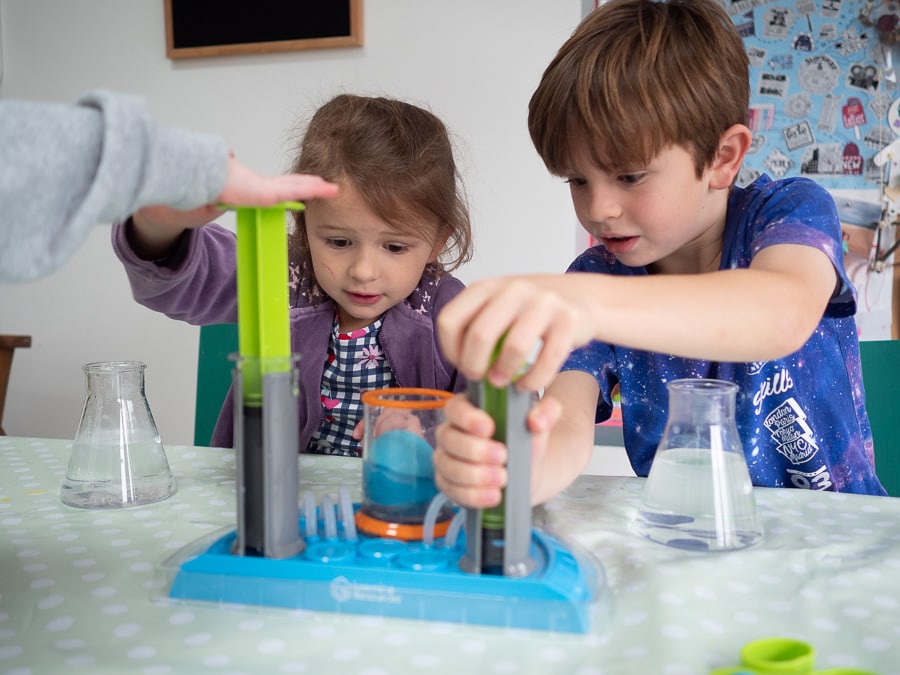
Personal and Social Benefits
Curiosity contributes to richer personal relationships through genuine interest in others and increased empathy for different perspectives and experiences. Curious individuals are more interesting companions because they continue learning and growing throughout their lives, bringing fresh insights and experiences to their relationships with family and friends.
The problem-solving skills developed through curious exploration serve individuals well in all areas of life, from managing household challenges to navigating complex social situations. The confidence that comes from successfully investigating and understanding new phenomena builds resilience and adaptability that help individuals thrive in an ever-changing world.
Contribution to Society
On a broader scale, curious individuals contribute to scientific advancement, cultural development, and social progress through their continued questioning and exploration. They're more likely to engage in civic activities, support education and research, and mentor younger generations in developing their own curiosity and learning skills.
The ripple effects of nurturing curiosity extend far beyond individual benefits. Curious adults raise curious children, creating positive cycles that benefit entire communities and societies. They support libraries, museums, schools, and other institutions that promote learning and exploration, contributing to environments where future generations can develop their own sense of wonder and discovery.
Conclusion: Cultivating Lifelong Wonder Through Stories and Exploration
Nurturing curiosity in children represents one of the most valuable gifts adults can provide. Through carefully crafted experiences involving children stories, hands-on exploration, thoughtful questioning, and supportive environments, we can help young minds maintain and strengthen their natural inclination to wonder, discover, and learn. The strategies outlined in this comprehensive guide provide practical approaches for creating curiosity-rich experiences that support children's development while maintaining the joy and excitement that make learning irresistibly appealing.
The journey of fostering curiosity requires patience, creativity, and flexibility from adults who serve as guides and companions in children's exploration of the world. By integrating bedtime stories, fairy tales, educational stories, and interactive learning experiences, we create multiple pathways for engagement that accommodate different learning styles and interests. The goal is not to fill children with predetermined knowledge but to equip them with the skills, confidence, and motivation to continue learning throughout their lives.
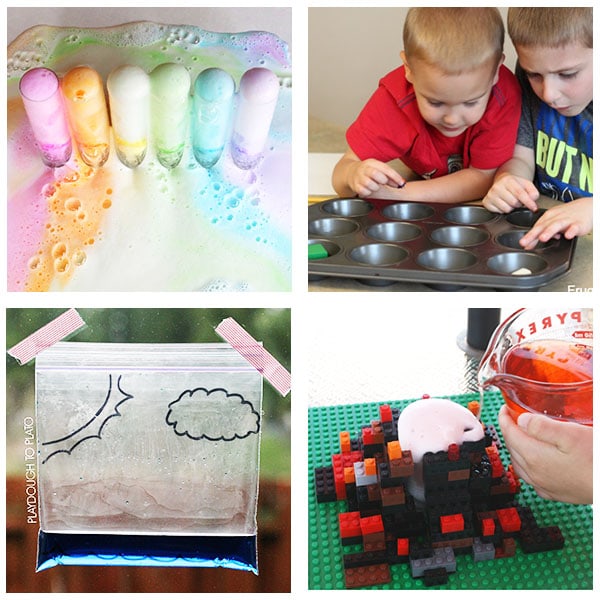
Remember that every child's curiosity develops at their own pace and in their own unique directions. Some may be drawn to adventure stories and outdoor exploration, while others gravitate toward magical stories and creative expression. Some find wonder in scientific investigation, while others discover fascination in animal stories and natural observation. The key is providing diverse opportunities and following children's interests while gently expanding their horizons through new experiences and perspectives.
The investment of time and energy required to nurture curiosity pays immeasurable returns in the form of confident, engaged, lifelong learners who approach challenges with optimism and opportunities with enthusiasm. These children grow into adults who contribute meaningfully to their communities while maintaining the sense of wonder that makes life rich and fulfilling.
As we conclude this comprehensive exploration of strategies for encouraging curiosity in children, remember that the most powerful tool at your disposal is your own genuine enthusiasm for learning and discovery. When children see adults who remain curious, ask questions, explore new ideas, and celebrate discovery, they internalize these behaviors as normal and desirable. Your modeling of lifelong learning provides the foundation upon which all other strategies build.
Ready to Begin Your Child's Curiosity Journey?
Discover our collection of carefully crafted magical bedtime stories designed to spark imagination, encourage questions, and nurture the natural curiosity that drives lifelong learning. Each story is created with the specific goal of engaging young minds while providing opportunities for discussion, exploration, and wonder.
Explore Magical Bedtime StoriesJoin thousands of families who have discovered the power of storytelling to transform bedtime into an adventure in learning and curiosity.
Related Articles and Resources
- Creating Interactive Story Time: Advanced Techniques for Parent Engagement
- Nature-Based Learning: Connecting Outdoor Exploration with Indoor Stories
- Building Home Libraries: Selecting Books That Spark Curiosity and Discussion
- Science Through Stories: Using Fairy Tales to Introduce STEM Concepts
- The Role of Questions: Teaching Children to Think Like Scientists
- Digital Storytelling: Balancing Screen Time with Traditional Reading
- Cultural Stories Around the World: Expanding Horizons Through Diverse Narratives
- From Listeners to Storytellers: Encouraging Children to Create Their Own Tales
Remember: The goal is not to create perfect little scholars, but to nurture human beings who approach life with wonder, ask thoughtful questions, and never lose their capacity for amazement at the beauty and complexity of our world.